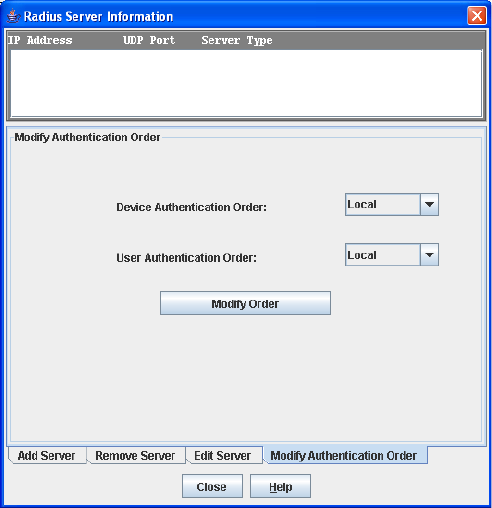User Manual
Table Of Contents
- Contents
- About this guide
- Using McDATA Web Server/Element Manager
- Managing Fabrics
- Securing a fabric
- Security consistency checklist
- Connection security
- User account security
- Remote authentication
- Device security
- Edit Security dialog
- Create Security Set dialog
- Create Security Group dialog
- Create Security Group Member dialog
- Editing the security configuration on a switch
- Viewing properties of a security set, group, or member
- Security Config dialog
- Archiving a security configuration to a file
- Activating a security set
- Deactivating a security set
- Configured Security data window
- Active Security data window
- Fabric services
- Rediscovering a fabric
- Displaying the event browser
- Working with device information and nicknames
- Zoning a fabric
- Zoning concepts
- Managing the zoning database
- Managing the active zone set
- Managing zones
- Merging fabrics and zoning
- Securing a fabric
- Managing switches
- Managing user accounts
- Configuring RADIUS servers
- Displaying switch information
- Configuring port threshold alarms
- Paging a switch
- Setting the date/time and enabling NTP client
- Resetting a switch
- Configuring a switch
- Archiving a switch
- Switch binding
- Restoring a switch
- Restoring the factory default configuration
- Downloading a support file
- Installing Product Feature Enablement keys
- Installing firmware
- Displaying hardware status
- Managing ports
- Glossary
- Index

58
Modifying RADIUS server authentication order
Editing information of a RADIUS server involves changing the configuration of a RADIUS server.
Figure 25 RADIUS Server Information dialog—Modify Authentication Order tab page
To modify the authentication order information of a RADIUS server:
1. Select Switch > Radius Servers in the faceplate display.
2. Click the Modify Authentication Order tab in the Radius Server Information dialog shown in Figure 25.
3. Select the server to be modified in server list at the top of the dialog.
4. Make changes to the Device Authentication Order or User Authentication Order drop-down lists. Select
one of the following:
a. Local—Only attempts to authenticate using local switch password database.
b. RADIUS—Only attempts to authenticate using the RADIUS server (another computer that provides
authentication).
c. RADIUS Local—Attempts to authenticate using the RADIUS server. If the switch can not contact the
RADIUS server due to a network or some other problem, the switch will authenticate using the local
password database.
5. Click Modify Order to save the changes.
6. Click Close to close the Radius Server Information dialog.










